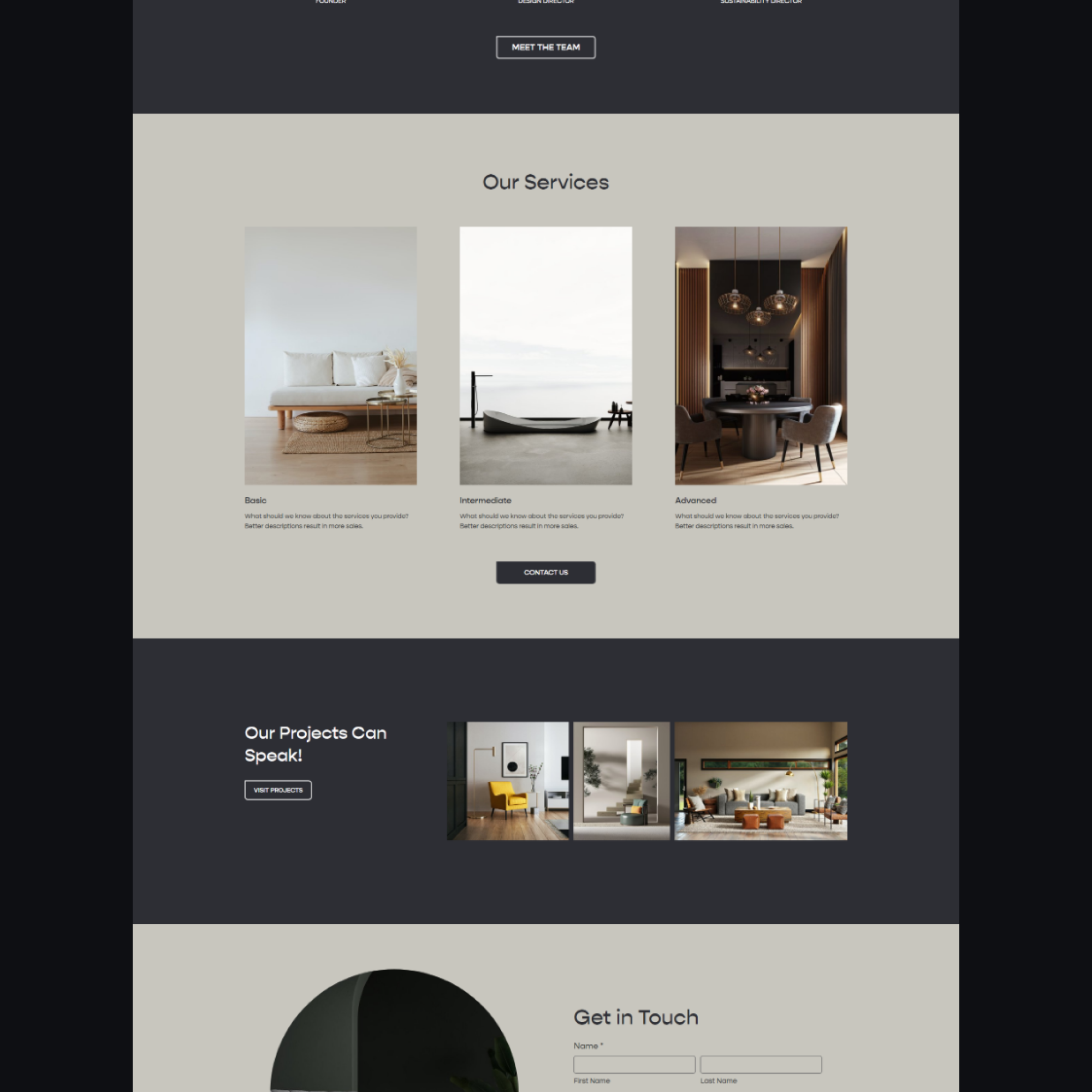It may sound false or frustrating but unless you're a world-class designer dealing with world-class businesses customers rarely care about your design skills.
They only care about one thing: How is your website going to help their business?
What Web Design Clients Really Care About.
As I am both a web designer and a client, I can speak from personal experience. The only thing I care about is how the website is going to improve my business.
Whether it's increasing sales, improving lead generation, or providing a better user experience, the end goal is always about business impact.
If you think a client will fall in love with you because you added a smooth scroll effect to their website or changed the default mouse cursor to a cooler one you're very mistaken.
I’ve personally fallen into this pitfall. In the past, I focused on adding features I thought were cool and innovative. For example, I added a drag effect for the cursor (kind of a delay) to give it a more “interactive” feel. All I got from the client was: "The mouse is lagging."
While this experience was at least funny, it taught me a valuable lesson: Your clients care more about functionality than flair. The design should serve their business goals, not your desire to show off your skills.
The Actual Goals Of Web Design

As a web designer, your goal is to help the business achieve any of these objectives:
1- Improve website performance
Websites that load faster have a direct impact on user experience and conversions. Clients care about performance because a slow website means lost customers and lower SEO rankings.
2- Make it easier for users to access information
Clients want their customers to find what they need quickly and easily. Whether it’s a product, contact information, or a blog post, your design should always prioritize accessibility and clarity.
3- Increase user retention
An intuitive website that’s easy to navigate increases user retention. Clients care about ensuring that visitors stay longer and return frequently. If your design makes it easier for visitors to explore their content, you’re on the right track.
4- Improve website speed
Clients may not understand how to optimize a website’s backend, but they do know that a faster website leads to a better experience for their customers. Performance standards such as optimizing images, reducing file sizes, and using CDNs are essential.
If your nice design is going to hinder one of these objectives then avoid it at all costs.
Avoid Focusing On Unnecessary Features
As a designer, it can be very easy to get sucked in and spend hours or even days on a feature just because you think it's cool.
From a business perspective, there's really nothing worse to do than wasting way too much time on something just because you think it's cool.
It's always better to get a MVP out as soon as possible even if it doesn't scratch that design itch and reiterate over and over again based on users' actions and interactions with your site, not based on personal taste.
Web Design Is All About Solving Problems.
Clients come to you with a problem or a goal, whether it's improving sales, gaining more traffic, or providing an easier way for their customers to book appointments. The goal of a web designer is to use their skills to solve these problems effectively.
As designers, our job is to make sure the website not only looks appealing but works smoothly and efficiently. It’s about creating an environment where customers can achieve what they came for, whether it’s purchasing a product, contacting the business, or finding information.
Good Web Design Is Unnoticeable.
You need not sacrifice your design skills. One of the most important skills you can acquire as a web designer is shedding the spotlight on the business itself not on your design skills.
Good web design will often go unnoticed because it came to serve a purpose, not to show off.
Want examples? Look at big companies like Facebook, Instagram, YouTube, Google, Airbnb.
The subtlety of these companies sometimes make you forget they have top tier designers working for them.
But their attention to detail and subtle use of hierarchy, typography, and colors make you focus on the features themselves, not on the person behind them.
There's Still Room For Creativity.
While it’s true that clients often care more about the functionality and impact of their websites than flashy design elements, that doesn’t mean creativity is not important. In fact, creativity plays a crucial role in how you solve problems and present solutions in a way that aligns with your client’s brand.
Creative design can still have a huge impact on a website’s performance and user experience when done in a thoughtful, purpose-driven way. Here’s how creativity can fit within a business-focused framework:
1. Creative Branding and Visual Appeal
Yes, clients care about performance, but they also want a website that feels like “theirs.” This is where creativity shines. A unique logo, a thoughtful color scheme, and the right fonts and imagery all help to give the website personality. It’s not just about looking good—it’s about helping the business stand out.
When a website has nice branding, it builds trust and makes a lasting impression. Visitors are more likely to engage, and the business gets a boost in perceived value.
2. Innovative User Interactions
Creativity doesn’t mean adding unnecessary animations or flashy effects for the sake of it. Instead, it’s about creating intuitive, meaningful interactions that enhance the user experience. Think easy-to-navigate menus, interactive product displays, or subtle animations that guide users where they need to go.
These small creative touches can make a big difference, turning an average user into a paying customer by making their experience smoother and more engaging.
3. Creative Solutions to Common Problems
As a designer, you’re always solving problems. If a website is cluttered with too much info, your job is to organize it in a way that’s digestible and user-friendly. That’s where creativity comes in—using dynamic layouts, smart content organization, and scalable designs to make the website easy to maintain and future-proof.
Creative solutions like these can have a real impact on the client’s business, improving efficiency and making the website work better for everyone.
4. Unique User Experiences (UX)
Great UX design is about making the user’s journey feel seamless and intuitive. It’s not about throwing in random design elements, but thinking through the experience from start to finish. How can you help visitors move through the site and take action? A personalized experience based on their behavior, clever call-to-action buttons, or a few creative touches can keep visitors engaged and push them closer to conversion.
5. Creative Storytelling
A good website doesn’t just sell a product—it tells a story. Through design, content, and imagery, you can craft a narrative that connects with users on an emotional level. Storytelling can guide users to a desired action, whether it’s signing up for a newsletter or making a purchase, all while aligning with the website’s business goals.
Conclusion:
In conclusion, clients do not hire you for your design flair alone—they hire you to solve problems and drive business results. Your primary responsibility as a web designer is to create websites that align with your client’s business goals, whether that’s improving performance, increasing user retention, or enhancing user experience.
While creative elements are important, they should always serve a functional purpose that helps meet the client’s objectives. Focus on providing clear, efficient solutions that prioritize the user’s needs and the business’s growth. Remember, good web design often goes unnoticed because it seamlessly facilitates the user journey and business goals.
In the end, it’s about creating websites that work, not just look pretty. When you embrace this approach, you’ll not only win clients’ trust, but you’ll also see your designs making a real impact on their businesses.


